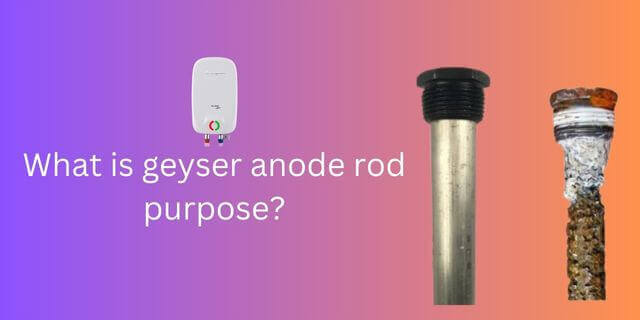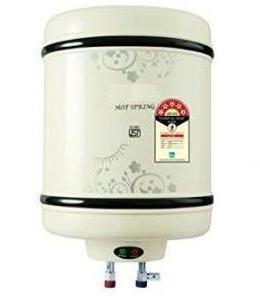What is the anode rod's purpose And Why is it in my Geyser?
Anode rod, also known as a "sacrificial rod," is made up of magnesium or aluminium and is fitted along with a heating element in a geyser tank, always submerged in water. The anode rod attracts iron, limestone, salt particles, and other minerals present in the water, which causes it to corrode or rust. At the same time, it protects the water tank from rusting. So, how does the anode rod work to protect the geyser?
Try our geyser selector to choose right geyser by answering simple questions without reading any buying guide.
Although geyser water tanks are coated with enamel or glass lining, there is a possibility of cracks or chipping in the glass lining. Hard water can seep into these cracks and start rusting the tank. This is where the anode rod comes into the picture. Technically, the anode rod is made up of magnesium or aluminium which corrodes or rusts quickly in water. In short, due to the chemical properties of magnesium/aluminium, the anode rod rusts faster than the iron/steel tank, thereby preventing the tank from rusting until the metal of the anode rod completely corrodes away. The anode rod sacrifices itself (by rusting faster) to save the tank, which is why it is also known as a "sacrificial rod."
Do I need an anode rod in my geyser?
Yes, obviously. A geyser without an anode rod is vulnerable to rust, which can cause the tank to leak and reduce its lifespan. Nowadays, most manufacturing companies provide an anode rod by default. However, it is essential to regularly replace old, rusted anode rods.
Which anode rod is better? Aluminium or magnesium?
It depends on the quality and hardness of the water in your home. Magnesium anode rods are preferred for use with soft water, whereas aluminium rods are suitable for use with hard and high-pH water.
When should the anode rod be replaced?
Again, it depends on the quality of the water and usage. Our suggestion is to replace or at least check the anode rod every three years. In case the water is hard, it should be checked once every two years.
Why does the anode rod rust a lot?
If the anode rod is rusting and corroding, it means it's doing its job very well. It's fulfilling its purpose by sacrificing itself to protect the water tank. The level and speed of rusting depend on the minerals present in the water and the hardness of the water
Does the anode rod make a water smell?
Sometimes, it can cause a rotten egg smell. When the anode rod rusts and corrodes, it reacts with water and produces "hydrogen sulfide" in the water heater, causing a rotten egg smell. In such cases, a professional electrician is needed to clean the entire geyser tank and replace the rusted anode rod.
Do all electric water heaters have an anode rod?
It depends on the manufacturer. Mostly, instant/tankless water heaters don't have an anode rod. But mostly all storage/tank geysers have one. However, before buying a geyser, it is advisable to check for an anode rod.How do you check an anode rod?
A professional technician will check it. They will need to unmount and open the geyser. Depending on the level of rust, the anode rod may need to be replaced.

Our smart selection tool guides you to the perfect and effortless purchase every time.
Facebook Twitter Email
Recommended articles for Geyser
Geyser types and buying guide
-
Geyser buying guide - India
-
Instant geyser vs storage geyser
-
How to select best kitchen geysers
-
Best geyser under 10,000
-
Best geyser under 6,000
-
Best geyser under 5,000
-
Fast track guide on Geyser installation and how to avoid common installation mistakes
-
Winter is coming! Is your Geyser ready?
-
Difference between vertical and horizontal geyser
-
Geyser vs Immersion rod
-
Geyser for High Rise Building
-
Best geysers for hard water
-
Can we use Instant Geyser for bathroom?
-
How to Reduce Geyser Electricity Consumption?
-
How to Calculate Geyser Size
-
How to increase geyser water pressure?
-
Gas Geyser or an Electric Geyser? Which is Better?
-
Is it safe to drink water from geyser?
-
Why geyser make noise? How to stop it
-
What is the anode rod's purpose And Why is it in my Geyser?
-
Does the geyser need service?
-
How safe are geysers without earthing?
-
Is gas geyser legal in India?
-
Are gas geysers dangerous?
-
What will happen in an electric geyser if there is no water in the geyser tank?
-
Does the geyser stop working when the inflow of water pressure is low?
-
Why Does a Geyser switch melt? Common Causes Explained


